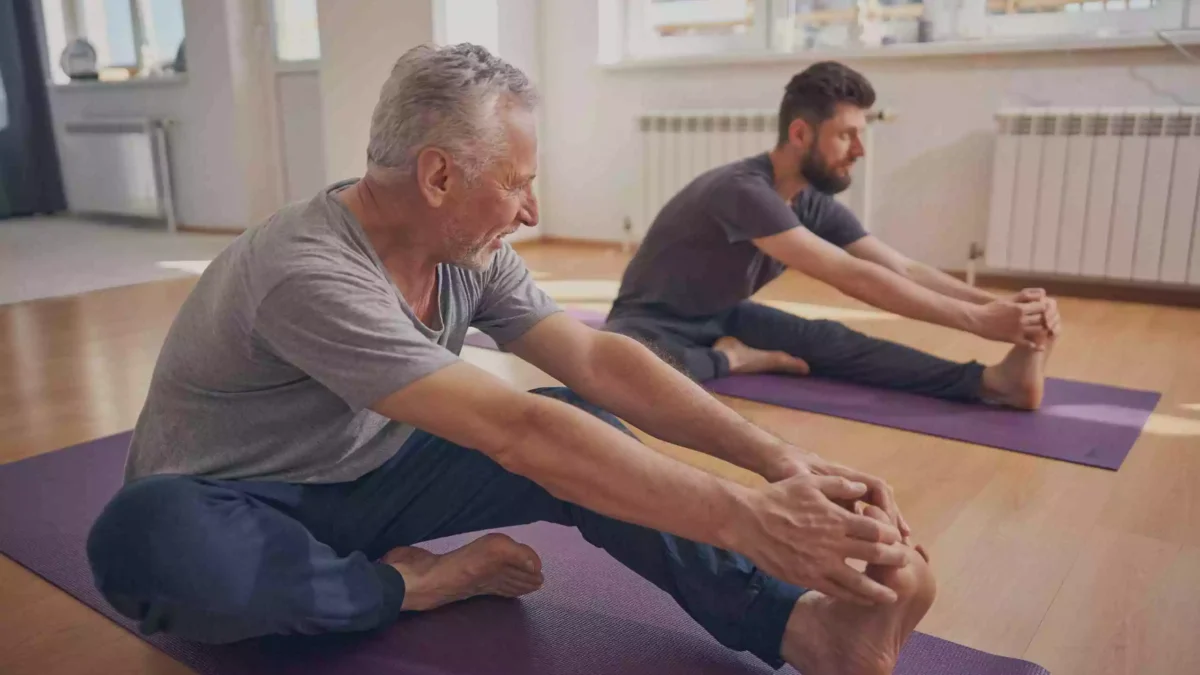
Teeth Whitening at Home
July 15, 2025
Nutrition for Aging Skin: Best Foods for a Radiant Complexion
July 24, 2025Strength training benefits seniors by improving muscle strength, balance, and overall health. Beginner exercises include chair squats and wall push-ups.
Strength training is essential for seniors to maintain a healthy lifestyle and enhance their quality of life. Regular exercise helps prevent muscle loss, improves balance, and reduces the risk of falls. Simple exercises, such as chair squats and wall push-ups, are easy to perform and provide significant health benefits.
Incorporating strength training into a weekly routine can increase energy levels, improve mobility, and support mental well-being. Starting with low-intensity exercises and gradually increasing the intensity ensures safety and effectiveness. Strength training empowers seniors to stay active, independent, and healthy, contributing to a more vibrant and fulfilling life.
The Importance Of Strength Training For Seniors
Strength training helps seniors fight muscle loss. Muscle loss happens as we age. This can make everyday tasks hard. Lifting weights or using resistance bands can build muscle. This keeps seniors strong and active. Regular exercise can slow down muscle loss. This means seniors can stay independent longer. Strength training also improves bone health. Strong bones are less likely to break.
Strength training helps seniors move better. It makes muscles stronger and more flexible. This improves balance and coordination. Better balance means fewer falls. Falls can be very dangerous for seniors. Broken bones and other injuries can happen. Exercise also helps with joint pain. Strong muscles support the joints. This can reduce pain and make moving easier.
Unpacking The Health Benefits
Strength training helps boost metabolic rate. This means you burn more calories. Staying active keeps your body fit and strong. Your muscles work harder and become stronger.
Strong bones are vital for seniors. Strength training improves bone density. This helps prevent osteoporosis. Regular exercise makes bones healthier. You can avoid fractures and breaks.
Exercise is good for the mind. Strength training supports mental health. It reduces stress and anxiety. Working out can make you feel happier. Your brain stays sharp and focused.
Debunking Myths Around Seniors And Exercise
Seniors often think they are too old to exercise. This is not true. Exercise helps improve muscle strength, balance, and flexibility at any age. Even starting in your 70s or 80s is beneficial. It is never too late to enjoy the benefits of strength training.
Many believe that seniors are more likely to get injured while exercising. In reality, proper exercise can reduce the risk of injury. Strength training helps build stronger muscles and bones. This makes everyday activities safer. Always start with light weights and proper guidance to stay safe.
Getting Started: Consultation And Planning
Always get a doctor’s approval before starting a new exercise routine. This is crucial for seniors’ safety. Discuss your health conditions and medications. Some exercises might need adjustments based on your health. Safety comes first.
Start with small goals. This keeps you motivated. Build strength gradually to avoid injuries. Aim for consistency rather than intensity. Set weekly targets and celebrate small wins. This approach makes the journey enjoyable.
Designing A Senior-friendly Strength Routine
Full-body movements are important for seniors. These exercises work multiple muscle groups. Squats and lunges are great choices. They improve strength and balance. Seniors should also try push-ups. Wall push-ups are easier and safer. Full-body movements help in daily tasks. They make everyday life easier.
Resistance is key for muscle growth. Start with light weights or resistance bands. Gradually increase the weight as strength improves. Resistance bands are great for beginners. They are safe and easy to use. Small dumbbells can also be helpful. Always choose a weight that is comfortable. Proper form is more important than heavy weights.
Essential Beginner Exercises
Chair squats help build leg muscles. Stand in front of a chair. Lower your body as if sitting. Pause just before touching the chair. Stand back up. Repeat this movement. It makes your legs stronger. Chair squats also improve balance. Start with a few repetitions. Gradually increase as you get stronger.
Wall push-ups work your upper body. Stand an arm’s length from a wall. Place your hands on the wall. Keep them shoulder-width apart. Lower your chest to the wall. Push back to the start position. Repeat this exercise. Wall push-ups strengthen arms and chest. They are easier than floor push-ups.
Toe stands help strengthen ankles and calves. Stand behind a sturdy chair. Hold the back of the chair for support. Rise up onto your toes. Hold for a few seconds. Lower back down slowly. Repeat this movement. Toe stands improve balance and coordination. They make your lower legs stronger.
Mindful Movement: Incorporating Balance And Flexibility
Tai Chi is a gentle exercise that helps with balance and stability. It involves slow, controlled movements. These movements improve muscle strength and flexibility. Seniors can reduce the risk of falling. Tai Chi also helps with stress and improves mood. It is a low-impact exercise, making it safe for seniors. Many find it relaxing and enjoyable.
Stretching is essential after exercise. It helps muscles recover and stay flexible. Regular stretching can reduce muscle stiffness. It also improves blood flow to the muscles. Seniors should hold each stretch for 20-30 seconds. Never bounce while stretching. Stretching can prevent injuries and improve overall mobility. Always stretch both sides of the body equally.
Tracking Progress And Staying Motivated
Set small goals to track your progress. Celebrate each achievement with a reward. Rewards can be simple, like a treat or a new book. Keep a journal to note your milestones. Share your progress with friends or family. They can help cheer you on. Use a calendar to mark your workout days. This helps you see your consistency.
Change your exercises to keep things interesting. Try adding new workouts every few weeks. This helps your muscles grow stronger. Listen to your body and adjust if needed. If something feels too easy, make it a bit harder. If it feels too hard, make it easier. Ask for help if you’re not sure how to change things. Stay motivated by seeing your improvements.
Safety First: Precautions And Injury Prevention
Proper technique and posture are very important. Always stand tall and keep your back straight. Bend your knees a little to avoid injury. Use a mirror to check your form. Start with light weights to learn the moves. Never rush through exercises. Slow and steady wins the race. Breathe out when lifting weights. Breathe in when lowering them. This helps to keep you safe.
When to rest and listen to your body is crucial. Stop if you feel sharp pain. Rest if you feel very tired. Your body needs time to recover. Overdoing it can cause injuries. Drink water to stay hydrated. Sleep well to help your muscles recover. Listen to your body’s signals. It will tell you what it needs.
Community And Support In Strength Training
Group classes offer a fun way to stay active. Seniors can make new friends and stay motivated. These classes often have trained instructors. They ensure safe and effective workouts. Everyone can encourage each other and share successes. This builds a sense of community. Group settings can also reduce feelings of loneliness. It’s a great way to stay connected.
A workout buddy can keep you accountable. You can support each other and have fun together. It’s easier to stay committed with a friend. A trainer can provide guidance. They help create a safe routine. Trainers can also adjust exercises to fit your needs. Both options offer motivation and support. This makes strength training more enjoyable.
Strength training offers numerous benefits for seniors, including improved mobility and reduced risk of falls. Starting with beginner exercises can build confidence and strength. Regular practice leads to a healthier, more active lifestyle. Embrace strength training and enjoy a better quality of life as you age gracefully.

